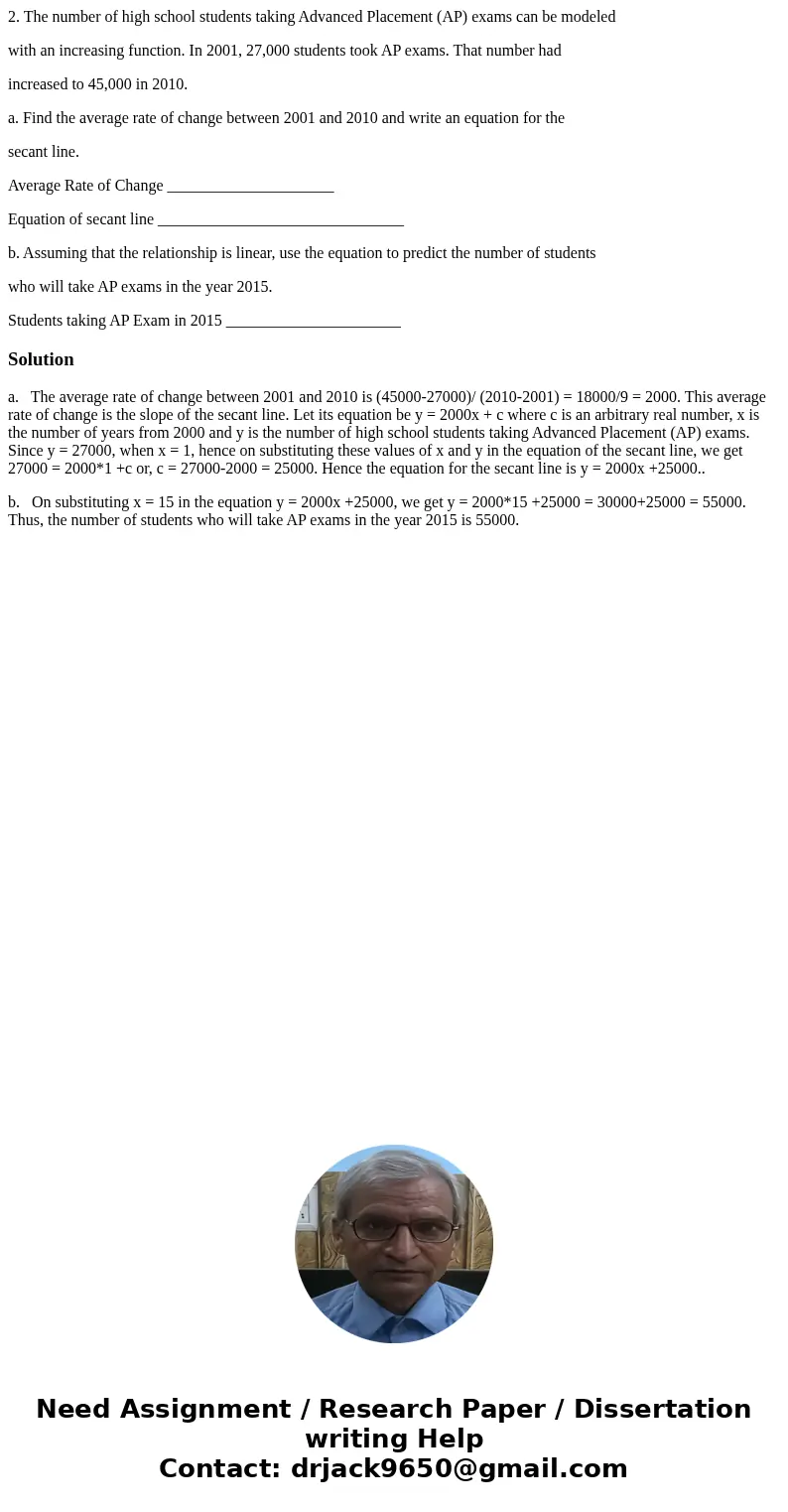2 The number of high school students taking Advanced Placeme
2. The number of high school students taking Advanced Placement (AP) exams can be modeled
with an increasing function. In 2001, 27,000 students took AP exams. That number had
increased to 45,000 in 2010.
a. Find the average rate of change between 2001 and 2010 and write an equation for the
secant line.
Average Rate of Change _____________________
Equation of secant line _______________________________
b. Assuming that the relationship is linear, use the equation to predict the number of students
who will take AP exams in the year 2015.
Students taking AP Exam in 2015 ______________________
Solution
a. The average rate of change between 2001 and 2010 is (45000-27000)/ (2010-2001) = 18000/9 = 2000. This average rate of change is the slope of the secant line. Let its equation be y = 2000x + c where c is an arbitrary real number, x is the number of years from 2000 and y is the number of high school students taking Advanced Placement (AP) exams. Since y = 27000, when x = 1, hence on substituting these values of x and y in the equation of the secant line, we get 27000 = 2000*1 +c or, c = 27000-2000 = 25000. Hence the equation for the secant line is y = 2000x +25000..
b. On substituting x = 15 in the equation y = 2000x +25000, we get y = 2000*15 +25000 = 30000+25000 = 55000. Thus, the number of students who will take AP exams in the year 2015 is 55000.

 Homework Sourse
Homework Sourse